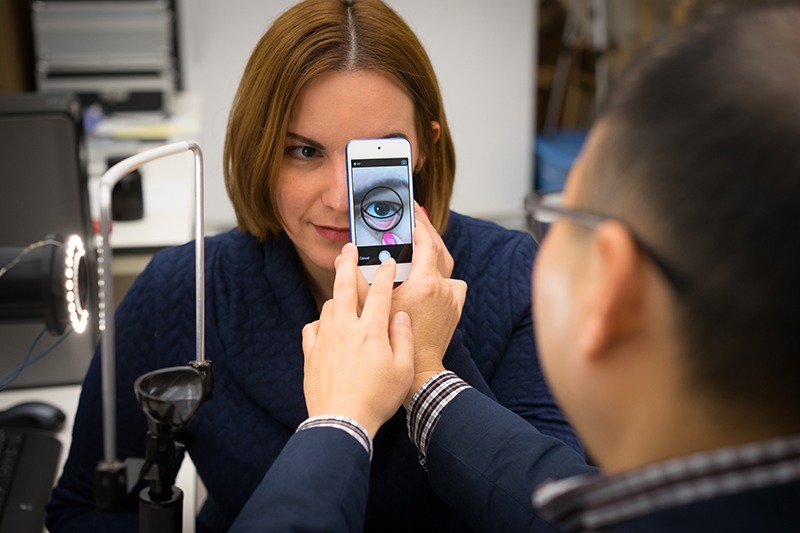Anemia is a condition where your tissues do not get adequate oxygen due to lack of healthy red blood cells. Having anemia can make you feel tired and weak. The condition is diagnosed using a blood test that measures hemoglobin, a protein in red blood cells. But now, Purdue University engineers have found a non-invasive way to diagnose anemia. They developed a software that would enable doctors or nurses to take a picture of your inner eyelid with a smartphone and instantly receive a near-accurate count of hemoglobin. The team is working on embedding the software into a mobile app, which is in development.
Read more Purdue Researchers Develop Wearable That May Help Prevent Sudden Death From Epilepsy
This new app could help bring sooner diagnoses and treatment or allow a person to better manage a blood disorder from home. The app also would help clinics in developing countries to better treat patients without the infrastructure to provide blood tests, reports Purdue University.
The scientists described their software in a paper published in the journal Optica, a publication by The Optical Society.
“This technology won’t replace a conventional blood test, but it gives a comparable hemoglobin count right away and is noninvasive and real-time,” said Young Kim, an associate professor of biomedical engineering at Purdue. “Depending on the hospital setting, it can take a few hours to get results from a blood test. Some situations also may require multiple blood tests, which lead to more blood loss.”
The method is a portable version of a commonly-used technique, called spectroscopic analysis, that detects hemoglobin by the specific way that it absorbs visible light. The resulting spectrum of light signals accurately gives a measure of blood hemoglobin content.
Compared to spectroscopic analysis, the smartphone app wouldn’t require any extra hardware to detect and measure hemoglobin levels.
Kim’s team developed an algorithm that uses an approach known as super-resolution spectroscopy to convert low-resolution smartphone photos to high-resolution digital spectral signals. Another computational algorithm detects these signals and uses them to quantify blood hemoglobin content.

“The idea is to get a spectrum of colors using a simple photo. Even if we had several photos with very similar redness, we can’t clearly see the difference. A spectrum gives us multiple data points, which increases chances of finding meaningful information highly correlated to blood hemoglobin level,” said Sang Mok Park, a Purdue Ph.D. candidate in biomedical engineering.
The tool was created based on data from a study of 153 patients referred for conventional blood tests at the Moi University Teaching and Referral Hospital in Kenya. The researchers began conducting this study in 2018 in collaboration with the Academic Model Providing Access to Healthcare program.
As each patient took a blood test, a researcher took a picture of the patient’s inner eyelid with a smartphone. Kim’s team used this data to train the spectral super-resolution algorithm to extract information from smartphone photos.
Read more Purdue University Researchers Develop Cheap, Biocompatible and Breathable Smart Stickers
Using results from the blood tests as a benchmark, the team found that the software could provide comparable measurements for a wide range of blood hemoglobin values.
In a separate clinical study, the team is using the app to assess blood hemoglobin levels of cancer patients at the Indiana University Melvin and Bren Simon Comprehensive Cancer Center, the Purdue University report said.












